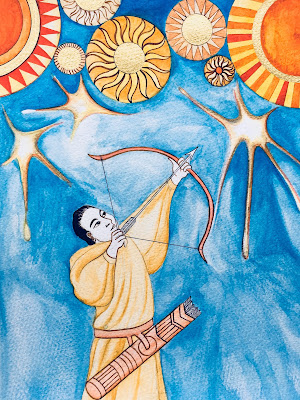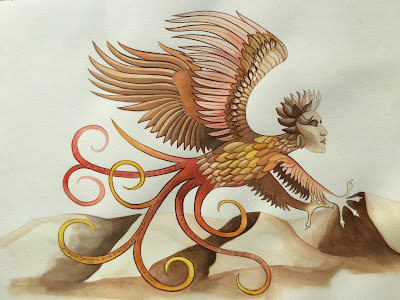Tale of the Lady Chang’e who lives in the moon

Here is a myth from China featuring a beautiful woman who lives in the moon and her husband, an exceptionally skilled archer. The story made a colourful subject for me to illustrate. Long ago when the world was young, there were ten suns which took turns to shine in the sky. However one day all the suns rose together at the same time threatening to burn up the earth. The gods called upon Hou Yi, an excellent archer for help. He shot down nine of the suns, leaving one to give the world the light and warmth it needed. Hou Yi was rewarded for this achievement with the elixir of immortality which he took home in a bottle, saying “ I will share this with my wife Chang’e and we shall choose a suitably romantic moment to take it.” The couple didn’t consume the elixir immediately but stored it away in their house. The archer’s apprentice Fengmeng heard about the elixir and sneaked into the house when his master was out hunting. Chang’e observed Fengmeng furtively moving about, awar





